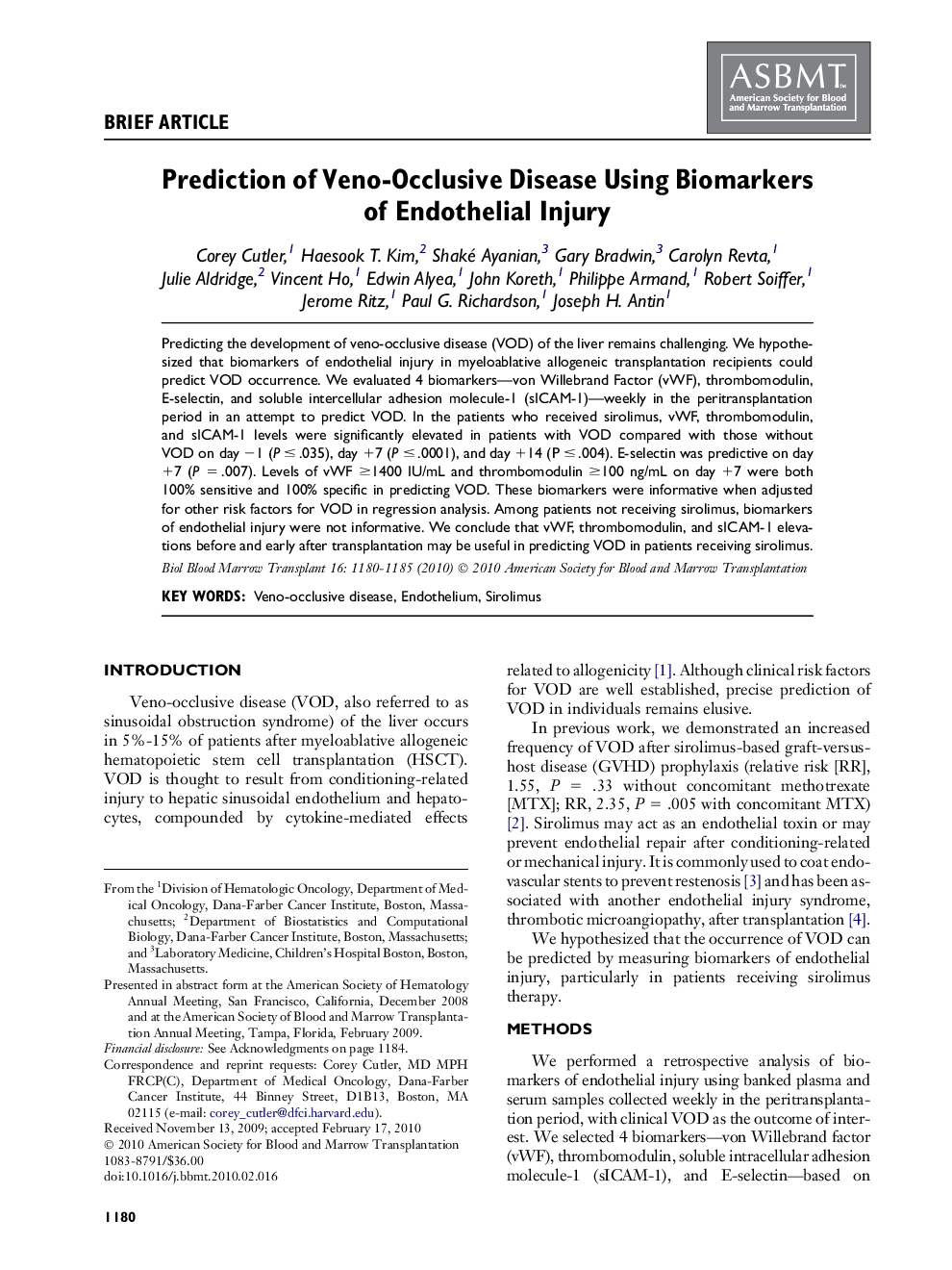| Article ID | Journal | Published Year | Pages | File Type |
|---|---|---|---|---|
| 2102759 | Biology of Blood and Marrow Transplantation | 2010 | 6 Pages |
Predicting the development of veno-occlusive disease (VOD) of the liver remains challenging. We hypothesized that biomarkers of endothelial injury in myeloablative allogeneic transplantation recipients could predict VOD occurrence. We evaluated 4 biomarkers—von Willebrand Factor (vWF), thrombomodulin, E-selectin, and soluble intercellular adhesion molecule-1 (sICAM-1)—weekly in the peritransplantation period in an attempt to predict VOD. In the patients who received sirolimus, vWF, thrombomodulin, and sICAM-1 levels were significantly elevated in patients with VOD compared with those without VOD on day −1 (P ≤ .035), day +7 (P ≤ .0001), and day +14 (P ≤ .004). E-selectin was predictive on day +7 (P = .007). Levels of vWF ≥1400 IU/mL and thrombomodulin ≥100 ng/mL on day +7 were both 100% sensitive and 100% specific in predicting VOD. These biomarkers were informative when adjusted for other risk factors for VOD in regression analysis. Among patients not receiving sirolimus, biomarkers of endothelial injury were not informative. We conclude that vWF, thrombomodulin, and sICAM-1 elevations before and early after transplantation may be useful in predicting VOD in patients receiving sirolimus.
